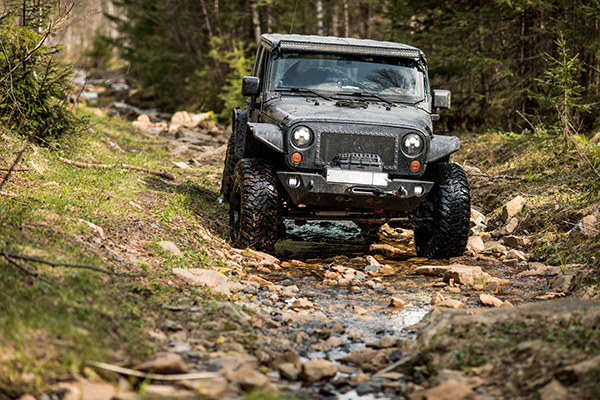
When you're heading off the pavement and into the dirt, rocks, or sand, one of the most important adjustments you can make to your vehicle is tire pressure. While highway tire pressure is optimized for fuel economy and tread life, off-road tire pressure serves a very different purpose. Knowing how and when to adjust it can improve traction, ride comfort, and overall control of your vehicle on rugged terrain.
Why Tire Pressure Matters Off-Road
The surface you drive on affects how your tires interact with the ground. On pavement, firm tire pressure enhances efficiency and improves steering response. But when the surface becomes loose, soft, or uneven, firm tires can actually hurt your vehicle's ability to grip.
Lowering tire pressure increases the contact patch—the area of the tire that touches the ground. With more tire surface pressing against the terrain, your vehicle gains more traction. Softer tires can also conform to the terrain, which helps absorb impacts and smooth out the ride.
How Low Should You Go
There isn’t a one-size-fits-all number because ideal off-road pressure depends on the type of terrain, the weight of your vehicle, and the tires you're running. But here’s a general guideline for most off-road conditions:
Gravel trails and dirt roads
Lowering pressure by 5 to 10 PSI from the manufacturer’s highway recommendation is often enough to improve grip and comfort.
Rocky terrain
You might lower your tire pressure to the low 20s or even upper teens (PSI), which allows the tires to better flex over obstacles without damaging the tire or the wheel.
Sand driving
You’ll want to go even lower—sometimes as low as 12 to 15 PSI. This helps your tires float on the surface instead of digging in and getting stuck.
Mud
Moderate deflation helps with traction but going too low increases the chance of losing the bead or damaging the tire.
Always make sure to re-inflate your tires when transitioning back to pavement. Driving at low PSI on highways is unsafe and can lead to excessive tire wear or even blowouts.
Consider the Equipment You’re Using
Different tires respond differently to deflation. Off-road-specific tires, such as all-terrain or mud-terrain tires, are built with stronger sidewalls that can handle lower pressures without compromising safety. On the other hand, regular street tires have thinner sidewalls and may not perform as well when aired down.
Also, the size and weight of your vehicle play a role. A heavy truck with a rooftop tent or gear will need slightly more pressure than a lighter SUV to prevent tire damage, even in off-road conditions.
Be sure your wheels are in good shape, too. Damaged rims or improperly seated beads can cause issues if you lower pressure too far.
Should You Air Down for Every Trail
Not necessarily. If you're only driving on well-maintained dirt roads or light gravel, airing down may not be needed. But if your plans involve deep sand, rocks, or technical trails, adjusting tire pressure can make the difference between a successful outing and getting stuck.
Some drivers air down as soon as they hit the trailhead, while others wait until they encounter more challenging terrain. The key is to understand your environment and be prepared to make adjustments when needed.
Bring the Right Tools
When heading off-road, always carry a tire pressure gauge and portable air compressor. Many tire deflators are made for off-road use and allow quick and precise adjustments. After your adventure, re-inflate your tires to their normal pressure before driving on pavement. Portable compressors powered by your vehicle’s battery or 12V outlet are ideal for this task.
Being prepared with the right gear helps protect your tires and ensures a smoother return to everyday driving.
Let the Experts at Stang Auto Tech in Broomfield, CO, Help You Get Trail-Ready
Before your next off-road trip, stop by Stang Auto Tech in Broomfield, CO. Our technicians can inspect your tires, provide tire pressure recommendations based on your vehicle and route, and make sure your equipment is ready for the trail. We can also help install tire deflators and onboard air systems or recommend upgrades to your off-road setup.
Trust Stang Auto Tech to get your vehicle off-road ready and keep your adventures smooth, safe, and under control.